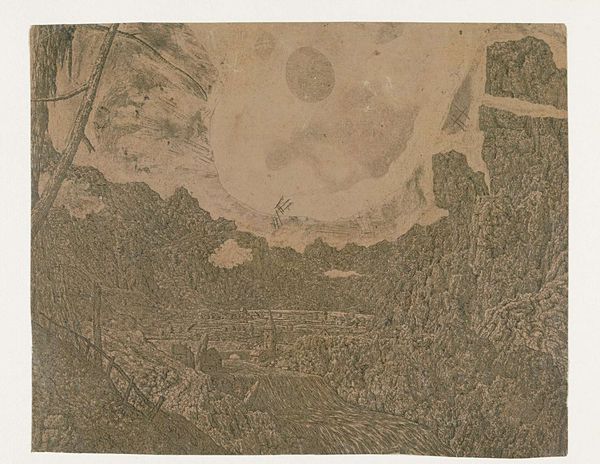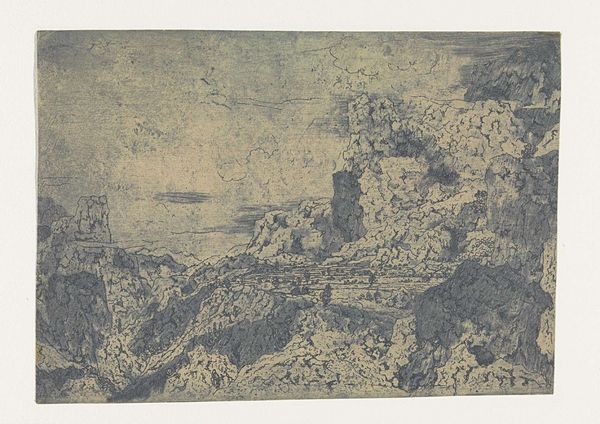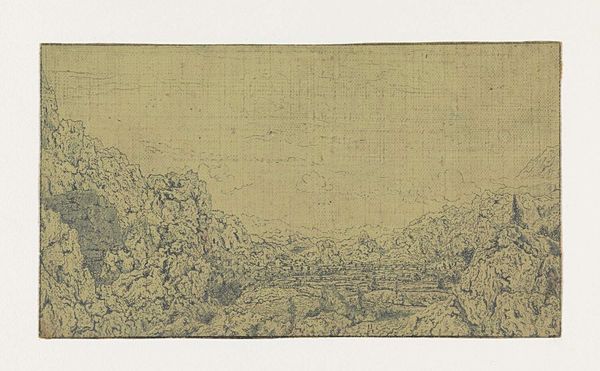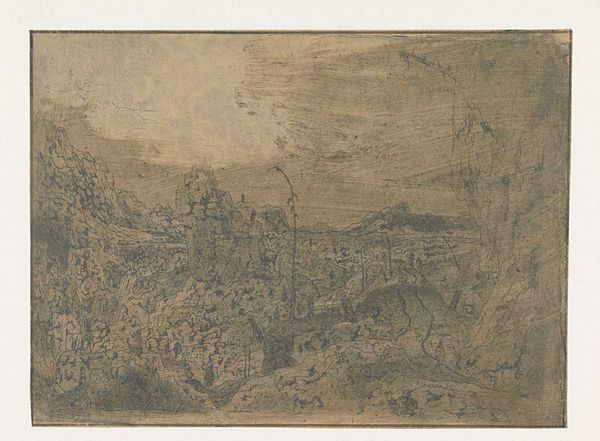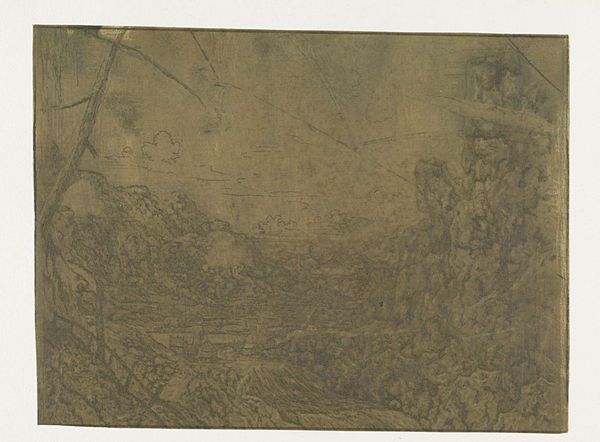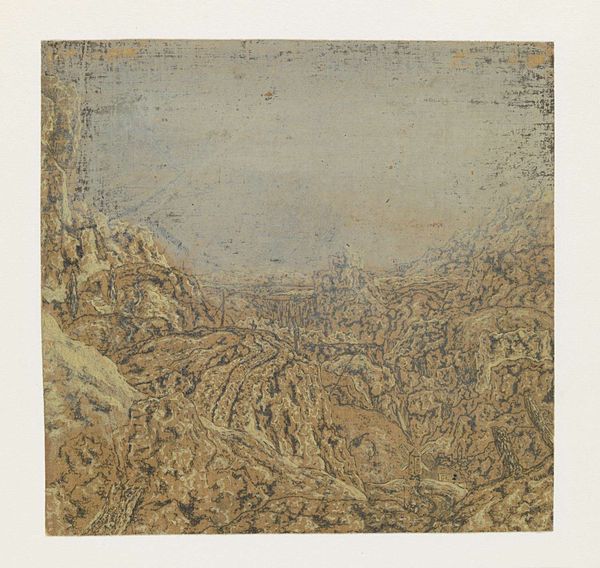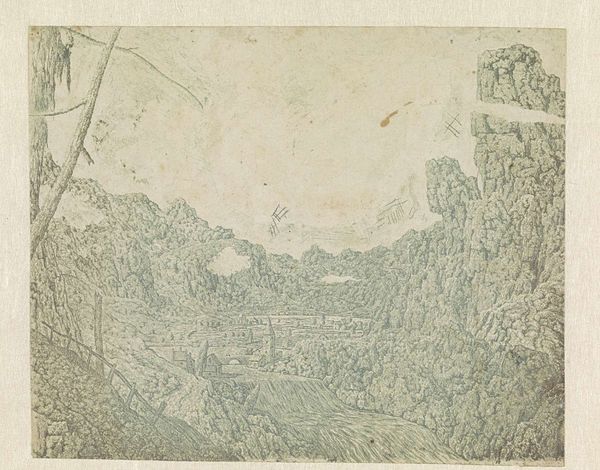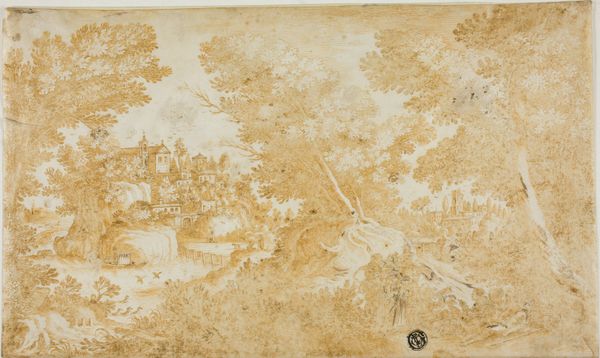
print, etching
#
baroque
#
dutch-golden-age
# print
#
etching
#
landscape
#
waterfall
#
linocut print
#
pen-ink sketch
#
mountain
#
line
Dimensions: height 148 mm, width 192 mm
Copyright: Rijks Museum: Open Domain
Hercules Segers made this artwork, "Landscape with a Waterfall, Second Version", using etching and possibly color printing techniques, sometime between 1620 and 1638. During the Dutch Golden Age, artists like Segers were both reflecting and shaping a sense of Dutch identity, particularly through landscape art. But Segers wasn't just documenting the world around him; he was re-imagining it. His landscapes often have a dreamlike quality, pushing beyond mere representation to explore emotional and psychological spaces. Segers was known for his experimental approach to printmaking, often combining etching with techniques like painting and applying color in unconventional ways, making each print unique. The panoramic view in "Landscape with a Waterfall" pulls us into a world that feels both familiar and strange. The waterfall isn't just a natural element; it becomes a symbol of nature's power, and perhaps the sublime. Segers, who struggled financially throughout his career, was admired by later artists, including Rembrandt. Segers’s innovative approach to landscape reflects the broader cultural shifts of his time, as the Dutch Republic was forging a new identity through trade, exploration, and artistic expression.
Comments
No comments
Be the first to comment and join the conversation on the ultimate creative platform.
